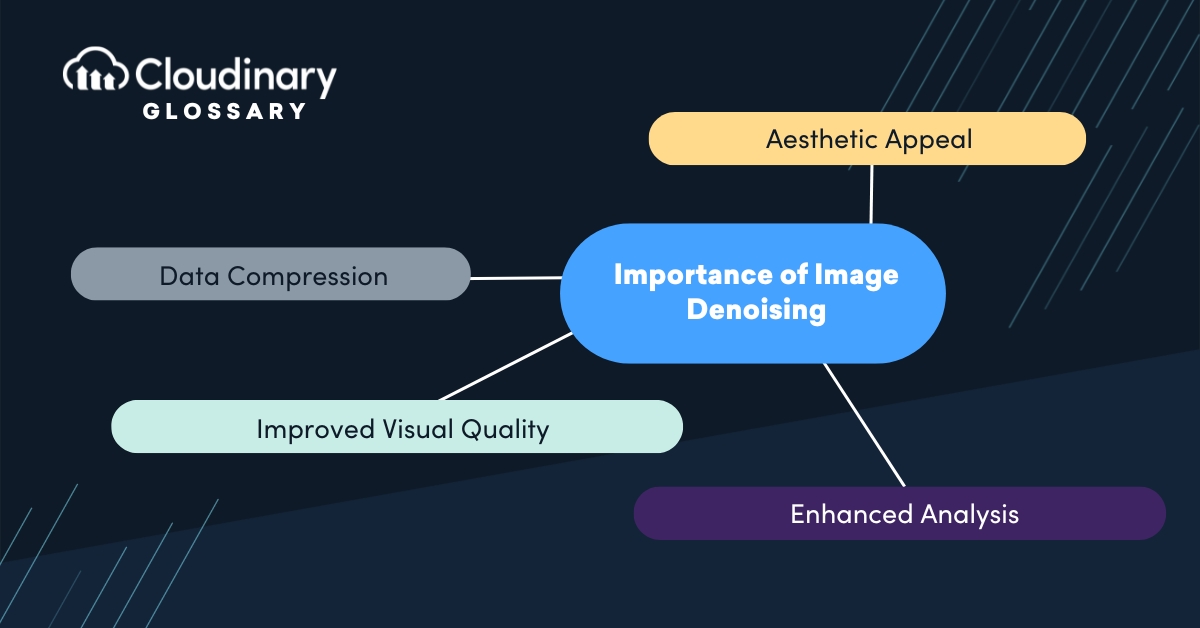
What Is Image Denoising?
Image denoising is the process of removing noise from an image, aiming to recover the original quality without compromising essential features. Noise can be defined as random variations in color or brightness in an image that are not present in the actual scene.
It can be introduced due to various factors such as poor lighting conditions, high ISO settings, limitations of sensors, or electronic errors. Denoising algorithms work by distinguishing the noise from the actual image content and minimizing or eliminating it, thereby producing a cleaner and more accurate representation of the scene.
Where Is Image Denoising Used?
Image denoising plays a key role in improving visual quality across many digital workflows. It removes unwanted grain, compression noise, or sensor artifacts without erasing important details. Developers apply denoising in various stages of media handling, especially when optimizing assets for clarity, performance, and user experience.
Common use cases include:
- Photography post-processing: Cleans up noise from low-light or high-ISO images captured on digital cameras or mobile devices.
- Video encoding workflows: Reduces compression artifacts and improves bitrate efficiency during transcoding or live streaming.
- Medical imaging: Enhances clarity in X-rays, MRIs, or CT scans where signal interference can obscure diagnostic detail.
- Security and surveillance: Sharpens images captured in low-light or motion-heavy environments to improve recognition.
- Machine learning and computer vision: Improves input data quality for object detection, segmentation, or facial recognition tasks.
- Image restoration and archival: Removes noise from scanned photographs or aged film for digital preservation.
- Gaming and 3D rendering: Refines textures and shadows in real-time scenes or ray-traced environments to reduce flickering and aliasing.
Importance of Image Denoising
The importance of image denoising cannot be overstated, as it drastically improves the utility and accuracy of digital images. Some key points include:
- Improved Visual Quality: By reducing noise, images become clearer and more visually appealing.
- Enhanced Analysis: In fields like medical imaging and satellite photography, denoising makes data interpretation more reliable.
- Data Compression: Cleaner images can be compressed more efficiently, saving storage space and bandwidth.
- Aesthetic Appeal: In creative arts and photography, denoising allows for sharper and more striking visuals.

How Image Denoising Works
Image denoising removes unwanted noise from digital images while keeping important visual details intact. Noise can come from low light, sensor limitations, or aggressive image compression algorithms. Denoising works by identifying and reducing random variations in pixel values that don’t match the natural structure of the image.
Most image denoising methods analyze patterns and textures to separate noise from meaningful content. Some techniques apply smoothing filters that average pixel values across small regions. Others use advanced algorithms like non-local means or wavelet transforms to detect and clean noise without blurring edges or textures.
Today, machine learning models are also used for denoising. These models are trained on large datasets to recognize what noise looks like and predict a cleaner version of the image. AI-driven methods often produce more accurate results, especially in complex or detailed images.
Last Thoughts
Image denoising is pivotal in ensuring images are clean, accurate, and suitable for analyses and presentations in various domains. While it offers substantial benefits, careful consideration must be given to the limitations to avoid compromising image integrity.
Also, you may want to try our latest background image tool converters:
- Light Pink Background
- Hot Pink Background
- Coral Background
- Crimson Background
- Dark Pink Background
- Neon Pink Background
- Pastel Pink Background
- Rose Gold Background
- Rose Background
- Magenta Background
- Fuchsia Background
- Orchid Background
- Pink Orange Background
- Red Purple Background
- Salmon Background
- Seashell Background
- Dusty Rose Background
- Pastel Red Background
- Pink Orange Background
- Plum Background
- Raspberry Background


